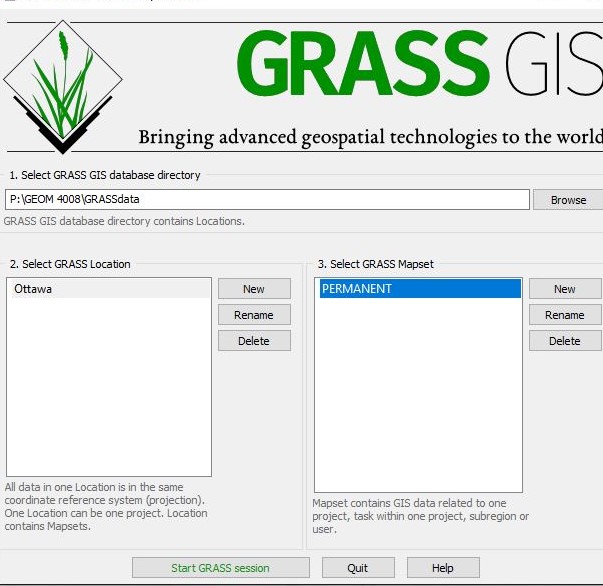Fire spread through cost path analysis in QGIS GRASS
Purpose
The purpose of this Wiki tutorial is to demonstrate a potential use of wildfire modeling tools in QGIS GRASS. The objective of this tutorial is to provide instructions on how to use digital elevation models (DEM) and vegetation data for setting up a cost analyses for wildfire spread in a given area. The process demonstrated in this tutorial would be able to be applied to different areas and different datasets.
Introduction
Materials and Data
GRASS is a free and open source geographic information system. The current stable version of GRASS is 7.2.2 , and can be downloaded as a stand-alone or as a package; we will be downloading it as a stand-alone. GRASS is available for a variety of platforms including Windows, Mac OS, and Linux. Various releases for download can be found at the GRASS website.
We will be starting with two sets of data that were manipulated to be used for this tutorial. The first is a digital elevation model (DEM), and the second is a land-cover type raster. DEMs can be used for many types of analysis, including hydrological or oceanography applications. In our case we will be using it to create wildfire spread analysis, by demonstrating cost paths in GRASS. Land-cover is important to model the spread of fire, and so a raster was created to represent the land-cover of the Ottawa region. All the starter data can be downloaded from [link here].
Make sure this is all downloaded before beginning the tutorial.
Methods
Setup
This section will outline set up of the tutorial, preparing the data for manipulation in GRASS.
1. Launch GRASS
